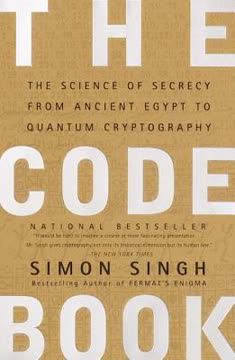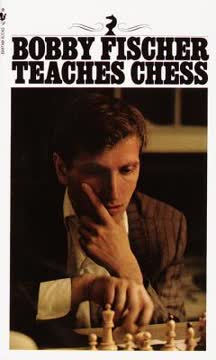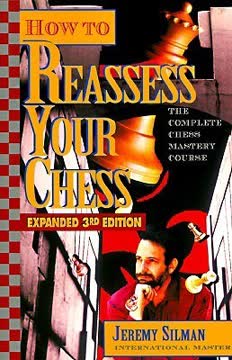Key Takeaways
1. Chess Openings: Your First Steps in a Strategic Battleground
Modern Chess Openings (MCO) is a one-volume reference book covering all the chess openings.
A century of knowledge. MCO has served as the standard English language guide to chess openings for nearly a century, earning the nickname "The Chess Player's Bible." Its evolution reflects the immense development of chess theory, incorporating strategies and variations discovered by masters across generations. It aims to provide a clear and concise overview for players of all levels.
Beyond the first moves. Studying openings is crucial for serious players, offering insights into strategic concepts, historical context, and specific lines of play. It helps players understand the typical positions that arise and the plans associated with them, whether following main lines, exploring sidelines, or recognizing traps and their refutations.
A guide to the landscape. The book organizes the vast world of chess openings into six major categories based on the initial pawn moves. These categories group openings with similar strategic foundations, making the material more accessible and manageable for study.
2. King's Pawn Openings: Classical Clashes and Romantic Gambits
Despite being one of the most topical openings in the twenty-first century, the Ruy Lopez is also one of the oldest ways of starting the game.
Diverse strategies from 1. e4 e5. Double King Pawn openings, starting with 1. e4 e5, offer a wide spectrum of play, from the quiet positional battles of the Giuoco Piano to the wild sacrifices of the King's Gambit and Evans Gambit. The Ruy Lopez stands out as a deeply theoretical and strategic opening, requiring significant study, yet offering rich, complex positions.
Challenging White's initiative. Black can choose symmetrical defenses like Petrov's, aiming for solidity and often leading to draws, or sharper counters like the Two Knights' Defence, which immediately challenges White's early aggression. Other options like the Scotch Game and Vienna Game provide alternative paths, often leading to dynamic play without the extensive theory of the Ruy Lopez.
Gambits for excitement. Openings like the King's Gambit, Evans Gambit, Göring Gambit, and Danish Gambit offer White the chance to sacrifice material early for rapid development and attacking chances. While theoretically Black can often equalize, these gambits promise lively, unbalanced games that can be psychologically challenging for the defender.
3. Semi-Open Games: Black's Dynamic Counterattacks
By playing the Two Knights’ Defence, Black issues a challenge on the third move.
Asymmetrical responses to 1. e4. Semi-Open Games arise when Black responds to 1. e4 with a move other than 1...e5, immediately creating an asymmetrical pawn structure. The Sicilian Defence (1...c5) is the most popular, leading to sharp, unbalanced games with counterplay on the queenside against White's typical kingside attacks.
Contesting the center indirectly. Defenses like the Caro-Kann (1...c6) and French Defence (1...e6) prepare to challenge White's central pawn with ...d5 on the second move. The Caro-Kann is known for its solidity and avoidance of a "bad" bishop, while the French often leads to cramped positions requiring careful maneuvering and pawn breaks.
Provocation and space. Alekhine's Defence (1...♘f6) is a provocative opening that invites White to gain space, which Black then seeks to undermine. These openings often lead to dynamic, fighting games, though Black risks being cramped if White successfully maintains their spatial advantage.
4. Queen's Pawn Openings: Navigating Complex Pawn Structures
The Queen’s Gambit (1 d4 d5 2 c4) is the keystone to an offensive plan by White on the left hand side of the board.
Strategic battles on the queenside. Queen's Pawn openings, starting with 1. d4 d5 2. c4, typically lead to strategic rather than immediate tactical clashes. The Queen's Gambit Declined (2...e6) is a vast and theoretically deep opening where Black accepts a slightly cramped position but avoids structural weaknesses, often leading to complex maneuvering games.
Solid and popular defenses. The Slav and Semi-Slav Defences (2...c6) are highly regarded for their soundness, allowing Black to support the center while keeping the light-squared bishop free. These can lead to solid positional games or sharp tactical battles, particularly in variations like the Semi-Slav Meran.
Imbalance and counterplay. The Tarrasch Defence (3...c5) offers Black active piece play and freedom at the cost of an isolated d-pawn. Other options like the Dutch Defence (1...f5) immediately create an imbalanced structure, focusing on kingside attack but potentially weakening the king's safety.
5. Indian Defences: Controlling the Center from the Flanks
The King’s Indian Defence, devised by the Austrian master Ernst Grünfeld in 1922, leads to the most open game of all the Indian Defences.
Hypermodern principles in action. Indian Defences, typically starting with 1. d4 ♘f6 2. c4, embody the hypermodern idea of controlling the center with pieces rather than occupying it with pawns. Black often fianchettos a bishop, exerting long-range pressure on White's central pawn mass.
Dynamic and complex struggles. The King's Indian Defence is known for its sharp, unbalanced positions, often leading to opposite-side castling and fierce pawn storms. The Nimzo-Indian Defence is highly respected for its strategic depth, focusing on disrupting White's pawn structure and piece coordination through the early bishop pin.
Variety in approach. The Grünfeld Defence leads to open, tactical games where Black challenges White's large pawn center directly. The Queen's Indian Defence offers a more solid and less risky approach, aiming for a flexible position and piece exchanges to alleviate spatial disadvantages.
6. Flank Openings: Building Pressure from the Sides
The English Opening is really a twentieth century invention, though its name derives from its association with the Englishman Howard Staunton.
Avoiding the central clash. Flank openings begin with White playing a wing pawn (1. c4, 1. ♘f3, 1. f4, 1. b3) rather than immediately contesting the center with 1. e4 or 1. d4. This approach often leads to less forcing, more strategic games with flexible pawn structures.
Strategic goals vary. The English Opening (1. c4) often involves White fianchettoing the king's bishop and fighting for control of the light squares, sometimes transposing into reversed Sicilian or Queen's Pawn structures. The Réti Opening (1. ♘f3) is another flexible system, often leading to hypermodern setups where White delays central pawn pushes.
Less common but playable. Openings like Bird's Opening (1. f4) and Larsen's Opening (1. b3) are less frequently seen at the highest levels but can be used for surprise value. While theoretically Black can often equalize, these openings offer White the chance to steer the game into less-analyzed territory.
7. Gambits: The Art of Sacrificing for Initiative
This bold gambit immediately livens up the game by offering a wing pawn to gain time for development and attacking the centre.
Material for momentum. Gambits are openings where one side offers material, usually a pawn, in exchange for compensation, typically in the form of rapid development, open lines, or attacking chances. They are often favored by aggressive players looking to unbalance the game from the outset.
From romantic to modern. Historically, gambits like the King's Gambit and Evans Gambit were popular in the romantic era of chess, leading to wild, combinative games. While some older gambits are now considered theoretically dubious against best play, modern theory has found ways to make others, like the Benko Gambit, respectable positional sacrifices.
Calculated risks. Playing a gambit requires a willingness to accept material deficit for dynamic advantages. Success often depends on the attacker's ability to exploit their lead in development or open lines before the defender can consolidate and make use of the extra material. Examples include:
- King's Gambit (1. e4 e5 2. f4)
- Evans Gambit (1. e4 e5 2. Nf3 Nc6 3. Bc4 Bc5 4. b4)
- Danish Gambit (1. e4 e5 2. d4 exd4 3. c3)
- Benko Gambit (1. d4 Nf6 2. c4 c5 3. d5 b5)
8. Opening Theory is Dynamic: Shaped by History, Masters, and Computers
Chess theory has developed immensely since then and continues to change every year as the world’s best players constantly find new strategies.
Evolution over centuries. Chess opening theory is not static; it has evolved significantly over the centuries, with masters constantly analyzing and refining existing lines and inventing new ones. Openings like the Ruy Lopez date back to the 16th century, while others like the King's Indian and Pirc are products of the 20th-century hypermodern movement.
Masters and their contributions. Great players throughout history have left their mark on opening theory, with variations named after figures like Ruy Lopez, Philidor, Tarrasch, Nimzovich, Alekhine, Fischer, and Kasparov. Their practical successes and deep analysis have shaped the theoretical landscape.
The computer age. The advent of powerful chess computers has revolutionized opening analysis. Computers excel at calculating variations, checking tactical accuracy, and uncovering hidden resources, often working in collaboration with human grandmasters to push the boundaries of known theory. This ongoing process means that the theoretical evaluation of openings can shift over time.
9. Every Opening Has a Distinct Character: Find Your Style
The style is quite different from the wide open attacking positions one sees in the Sicilian and other defences.
Beyond just moves. Each opening possesses a unique character, influencing the type of positions and strategic themes that are likely to arise. Some openings lead to open, tactical battles with sharp complications, while others favor closed, positional maneuvering and slow buildups.
Matching opening to player. A player's temperament and style should ideally align with the openings they choose. Aggressive, tactical players might prefer gambits or dynamic defenses like the Sicilian Dragon, while positional or defensive players might opt for solid choices like the Caro-Kann or Queen's Gambit Declined.
Variety in the repertoire. Building a repertoire involves selecting openings for both White and Black that suit one's style and are theoretically sound. Understanding the character of different openings helps players make informed choices and prepare effectively for the types of games they want to play.
10. Choosing Your Repertoire: Start Simple, Learn as You Go
Modern Chess Openings, 15th edition, may look large and difficult but it is easy to use even if you are a novice – providing you start with simpler openings.
Don't be overwhelmed. The vastness of opening theory can seem daunting, especially for beginners. The key is to start small and gradually expand your knowledge. Focus on learning a few basic openings for both White and Black.
Build step-by-step. For White, choose one main first move (1. e4, 1. d4, or 1. c4) and learn responses to Black's most common replies. For Black, select a defense against White's primary first moves. Simple openings are recommended initially, such as the Evans Gambit or Centre Counter Defence.
Learn through practice. The most effective way to learn openings is by playing games and analyzing them afterward. Refer back to opening resources as needed when encountering new lines or facing difficulties. This practical approach helps solidify theoretical knowledge.
11. Key Positional Ideas: Pawn Structures, Piece Activity, and Space
Strategically, White’s plan when playing 2 c4 is to attack the centre and remove Black’s d-pawn from its central position so that White is free to advance the e-pawn to e4.
Central control is paramount. Regardless of the specific opening, the struggle for control of the center is a fundamental theme. Openings dictate how this struggle unfolds, whether through direct occupation, indirect control, or attempts to undermine the opponent's central presence.
Pawn structures define the game. The arrangement of pawns often determines the strategic character of the middlegame. Concepts like isolated pawns (Tarrasch), doubled pawns (Exchange Ruy Lopez, Sämisch Nimzo-Indian), pawn chains (French, King's Indian), and pawn majorities (Queen's Gambit Accepted) create inherent strengths and weaknesses that players aim to exploit.
Piece activity and coordination. Openings aim to develop pieces harmoniously and place them on active squares where they exert influence and prepare for tactical or strategic operations. Concepts like the bishop pair, knights on strong outposts, and control of open files are recurring themes that contribute to a player's advantage.
Last updated:
Review Summary
Modern Chess Openings is widely regarded as a comprehensive reference for chess openings, though some reviewers note it is becoming outdated. Many praise its value for intermediate players building an opening repertoire. Critics argue online databases have made it obsolete, while others appreciate having a physical reference. Some find it difficult to read through, viewing it more as an encyclopedia. Despite mixed opinions on its current relevance, most agree it has been an essential resource for chess players over the years, earning its nickname "The Chess Player's Bible."
Similar Books
Download PDF
Download EPUB
.epub digital book format is ideal for reading ebooks on phones, tablets, and e-readers.










